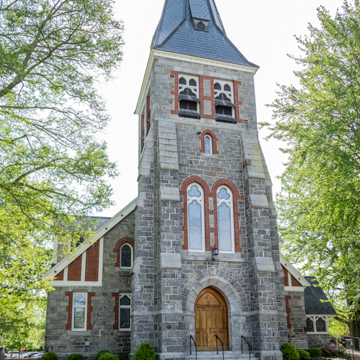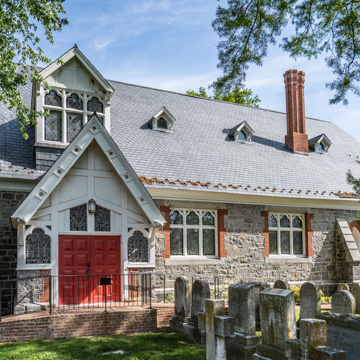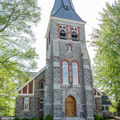One of the most distinctive buildings in St. Michaels is this High Victorian Gothic church. It is the fourth edifice for the Christ Episcopal Church of St. Michael Archangel parish, which dates to the 1692 establishment of the Church of England in Maryland. The congregation predates the formal development of the town, perhaps inspiring its name. Built of Port Deposit granite shipped by barge via the Chesapeake Bay, it encompasses half-timber framing with brick nogging and a buttressed central entrance tower with bell cote and spire. The lofty interior boasts a timber ceiling supported by principal rafters with through-purlins, common rafters, and king posts rising above the collar beams. Its architect was the son of an Episcopal priest and a founder of the New York Ecclesiological Society known for his church designs, including All Saints Church (1901; 10806 Longwoods Road) in Easton.
You are here
CHRIST EPISCOPAL CHURCH
If SAH Archipedia has been useful to you, please consider supporting it.
SAH Archipedia tells the story of the United States through its buildings, landscapes, and cities. This freely available resource empowers the public with authoritative knowledge that deepens their understanding and appreciation of the built environment. But the Society of Architectural Historians, which created SAH Archipedia with University of Virginia Press, needs your support to maintain the high-caliber research, writing, photography, cartography, editing, design, and programming that make SAH Archipedia a trusted online resource available to all who value the history of place, heritage tourism, and learning.












